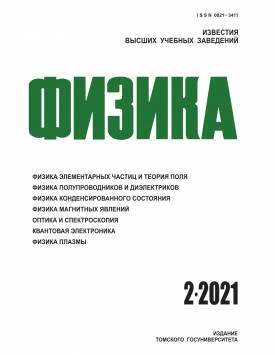Study of paramagnetic properties of graphene structures obtained by the influence of ultrasound on pure graphite in organic reagents
For obtaining of the graphene to use action of an ultrasonic field on organic reagents and pure graphite. Toluene, benzene, kerosene and hydrogen peroxide were used as organic reagents. Toluene, benzene, kerosene and hydrogen peroxide were used as organic reagents. The article presents the experimental results of the study of graphene in the systems under consideration. Graphene structures are formed during the chemical interaction of these organic solvents with graphite. This leads to the destruction of weak carbon bonds between graphite planes. This study has identified that the ultrasonic field contributes to a more effective destruction of the van der Waals bonds between graphite planes. The results of this investigation show that the use of the listed organic solvents, unlike other methods using acids and alkali solutions, provides a more efficient way to obtain graphene structures. Presents the results of a study of graphene structures by electron paramagnetic resonance spectroscopy and discusses them.
Keywords
graphene,
organic reagents,
paramagnetic characteristics,
ultrasonic treatmentAuthors
| Baytimbetova B.A. | Physical and Technical Institute, Satbayev University; Al-Farabi Kazakh National University | baitim@physics.kz |
| Ryabikin Yu.A. | Physical and Technical Institute, Satbayev University | yuar1939@mail.ru |
| Mukashev B.N. | Physical and Technical Institute, Satbayev University | mukashev2005@mail.ru |
Всего: 3
References
Geim A.K. and Novoselov K.S. // Nature Mater. - 2007. - V. 6 (3). - P. 183-191.
Ткачев С.В., Буслаева Е.Ю., Губин С.П. // Неорган. материалы. - 2011. - Т. 1. - С. 5-14.
Байтимбетова Б.А., Верменичев Б.М., Рябикин Ю.А. и др. // Изв. вузов. Физика. - 2015. - Т. 58. - № 3. - С. 101-105.
Пивень Н.П., Мурадян В.Е., Бабенко С.Д. и др. // Химия высоких энергий. - 2010. - Т. 44(4). - С. 380-381.
Garaj S., Thien-Nga L., Gaal R., et al. // Phys. Rev. B. - 2000. - V. 62. - P. 17115-17119.
Ali F., Agarwal N., Nayak P.K., et al. // Current Sci. - 2009. - V. 97(5). - P. 683-689.
Ryabikin Yu.F., Baitimbetova B.A., and Zashkvara O.V. // Spectros. Lett. Int. J. Rapid Commun. - 2008. - V. 41(1). - P. 9-14.
Сiri L., Sienkiewicz A., Mioni M., et al. // Phys. Status Solidi B. - 2009. - V. 246. - P. 2558-2562.
Удовицкий В.Г. // Физическая инженерия поверхности. - 2009. - Т. 7(4). - С. 351-373.
Nafradi B., Nemes N.M., Feher T., et al. // Phys. Status Solidi B. - 2006. - V. 243. - No. 13. - P. 3106-3110.
Байтимбетова Б.А., Рябикин Ю.А. // Вестник КазНТУ. Сер. технич. науки. - 2015. - № 2. - С. 214- 220.
Байтимбетова Б.А., Верменичев Б.М. Способ получения графена // Патент 2013/0559.1.
Ryabikin Yu.A., Zashkvara O.V., Denisova A.A., et al. // Phys. Metals and Metal Sci. - 1989. - V. 67(1). - P. 65-72. http://impo.imp.uran.ru/fmm/Electron/vol67_1/main.html.
Ryabikin Yu.A., Zashkvara O.V., and Melichov V.D. // Material Science Proceeding of the first Asia-Pacific EPR/ESR Symposium. 20-24 January 1997. - Hong-Kong: Springer, 1997. - P. 636-644.
Ryabikin Yu.A., Rakymetov B.A., Baytimbetova B.A., et al. // News of the National Academy of Sciences of the Republic of Kazakhstan. Physical-mathematical Series. - 2016. - V. 6(310). - P. 91-98.
Baitimbetova B.A. and Ryabikin Yu.A. // Compustion and Plasmochem. - 2015. - V. 13(1). - P. 32- 38.
Мунхцэцэ Г.С., Поклонский А., Хомич А.В. и др. // Вестник Белорусского государственного университета. Сер. Физика. Математика. Информатика. - 2007. - № 3. - С. 49-55.
Вертц Дж. Теория и практические приложения метода ЭПР: пер. с англ. - М.: Мир, 1975. - 548 с.
